Matisse's crowning achievement, the Vence Chapel
When Matisse overcame old age and disability to create a wonder.
Matisse and the healing powers of art
Dear reader, we discussed previously that "Being Kind To A Genius Might Make You Eternal".
Here we discover how conversations between a young night nurse and an elderly, bedridden Matisse prompted him to create the Vence Chapel, in his own words:
The crowning achievement of my entire career.
I must confess that seeing Matisse's masterpiece has been a lifelong dream of mine. Only a few days after seeing and photographing it, I am eager to share its wonder with you.
Our story starts fifty years before the conversations between an aging patient and his nurse.
We are in the North of France, in a family without ties to the art world. A 20-year-old law clerk, Henri Matisse, spent weeks in bed recovering from surgery.
His mother, an amateur painter, tried to lift the young man's spirits by bringing him a box of colors.
The healing effect of creating art worked so well that the young clerk moved to Paris to take art lessons. He remained fascinated with color for over sixty years, becoming one of the greatest painters of the 20th century.
Fifty years later, aged 72, Matisse survived cancer. But surgery diminished him physically; he had to wear an orthopedic corset and needed a wheelchair, as he was only able to stand for short amounts of time.
He was under 24-hour care, so our story starts with a conversation between the patient and his nurse.
"Joy radiates in my work"
Doctors had told Matisse he had six months to live, so, realizing he had been given a 'second life,' he got a creative boost with a new technique: cut-outs.
As visible in the image above, assistants paint one color on a piece of paper, and Matisse cuts them into shapes with scissors.
The child-like simplicity of the method, neither drawing, painting, or sculpting, but all three into one, mesmerized the artist:
Joy radiates more in my work than before, exactly what I have been trying to do for fifty years!
That's the context needed to understand how conversations between a nurse and her patient led to the creation of Matisse's masterpiece.
A night nurse and her patient discuss art

We are in 1942, during the war, and 21-year-old Monique Bourgeois, a student nurse, is seeking work. Matisse advertises that he seeks a "young and pretty nurse."
Monique, who did not know who Matisse was, applied for the job. Here are Monique's recollections of their conversations:
An indestructible bond was forming between nurse and patient. Finally, I admitted to him that I loved to draw.
I brought Matisse several of my watercolors. His interest astonished me.
In turn, Matisse showed Monique his paintings.
Matisse - Well, what do you think of them?
Monique - I was totally speechless.
Matisse - Do you really dislike them that much?
Monique - Monsieur, forgive me for saying this, I like the colors, but the shapes are just awful.
Matisse - I'm still very happy about what you said. At least you didn't say "Dear Master, your work is just wonderful", although you thought just the opposite.
The effect, according to Monique, was that:
Soon, we were close friends. He always treated me with great sensitivity.
Matisse kept in touch with Monique, asking that she pose for him. In her youth, the young woman was told she was ugly, which she believed she was. Posing for Matisse helped Monique to state:
Little by little, these simple posing sessions and explanations helped me overcome the inferiority complex I'd carried with me since the mockeries I had endured as a child.
Matisse's model becomes a Dominican nun
During the war, Matisse moved to a small village outside Nice, Vence, across the street from a Dominican congregation. One of the sisters’ patients was Monique, recovering from tuberculosis.
For a time, Monique returned to her role as a nurse for Matisse, but religion was her calling, and she became Sister Jacques-Marie. Matisse, who did not understand her decision and thought he would never see her again, wrote to her:
Believe that my thoughts are with you and that my deepest hope is for you to achieve your dream.
But these two were destined to meet again. Sister Jacques-Marie returned to Vence as a Nursing Nun. The Dominican congregation's chapel was a small garage with a leaky roof that risked collapse.
On the other side of the street was Matisse, who was always benevolent towards his former model. He insisted on offering her a motorbike instead of the bicycle she used to visit patients.
Sister Jacques-Marie designed a stained-glass window and showed Matisse her sketch.
To my surprise, he really like it. He thought its simplicity gave it a refreshing quality. He was determined to help me find a way of transforming it into a real stained-glass window.
"I'll give you everything you need to do it," said Matisse.
But the nuns were anything but enthusiastic about the idea. Things only started to change when an architect-priest arrived in Vence.
"This church will be a diamond"
The priest asked to meet Matisse to discuss the chapel, and Sister Jacques-Marie describes what came next:
Matisse couldn't contain his joy.
I'm going to build your chapel, and I'll be responsible for the windows!
A joyful, rejuvenated 77-year-old artist embarked on the project of a lifetime. Matisse had never designed a building before, and conceived everything from floor tiles to the roof, including the priest's outfits.
Dear reader, please do not think for one minute that Matisse pushed the nun aside to take over. Matisse made clear that it was a "shared project". Sister Jacques-Marie's superiors dismissed the talk of a Matisse Chapel as "something that would never take place". It caused her "so much heartache.”
Matisse's drive and stubbornness made her dream a reality. The idea came from her and the execution from him.
Overcoming old age and disability
Be it Picasso, who tried all his life to draw like a child, or Monet, who painted the Water Lilies rooms in his 80s, great artists reach the essence of their art after decades of creativity.
To make sense of his design's apparent simplicity, Matisse explained:
When I enter the chapel, I feel that all of me is there—finally, all the best things I had as a child, something I have tried to keep all my life.
It was in the creation of the chapel of Vence that I finally woke up to know myself, and I understood then that all the hard labour throughout my life was for humanity, and that through me a fresh beauty of the world must be a little better revealed.
Simple but powerful designs
Let us have the artist himself explain what he was doing:
Simple colors can affect the innermost feelings, their impact being even more forceful through their simplicity.
Blue, for instance, accompanied by the radiation of its complementary hues, affects the feeling like a vigorous stroke of a gong.
For me, this chapel is the achievement of an entire life's work, the outcome of tremendous, difficult, and sincere effort.
Small chapel, towering achievement
Matisse died in 1954. Sister Jacques-Marie was not allowed to attend the funeral, which was "hard to accept". To conclude this journey, let us hear from the chapel's creators.
Sister Jacques-Marie:
The dazzling little white chapel remains there, sitting on the hill overlooking the little Provençal village of Vence.
It awaits all those who wish to commune with light.
And Henri Matisse:
I hope that everyone who enters my chapel will feel purified and that their burdens will be relieved.
Matisse added that the chapel is:
A church full of gaiety—a place which will make people happy.
After so many years of waiting, this is precisely what I felt when I finally entered the Vence Chapel. I hope, dear reader, that this little story also brought you a Moment of Wonder.
This story is linked to Matisse’s paper cut-outs. So, dear reader, if you want to know more about them, please mention it in the comments.
Sources
Matisse, Ecrits et propos sur l’art.
Chapelle du Rosaire of the Dominican nuns of Vence by Henri Matisse.
Sister Jacques-Marie, Henri Matisse, the Vence Chapel.
https://www.moma.org/interactives/exhibitions/2014/matisse/the-cut-outs.html
http://chapellematisse.com/FR/reperes-chronologiques-matisse-soeur-jacques-marie.php





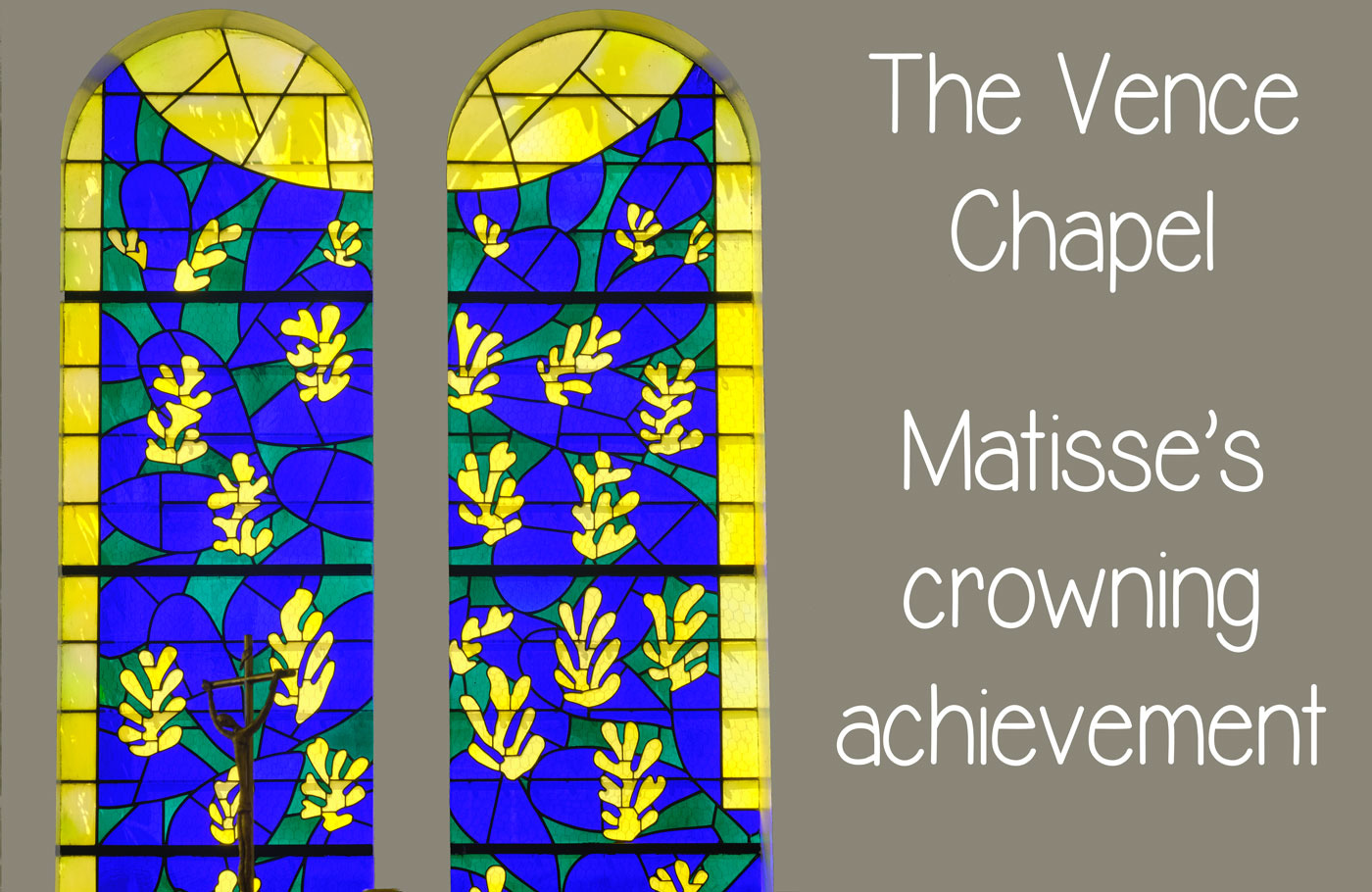
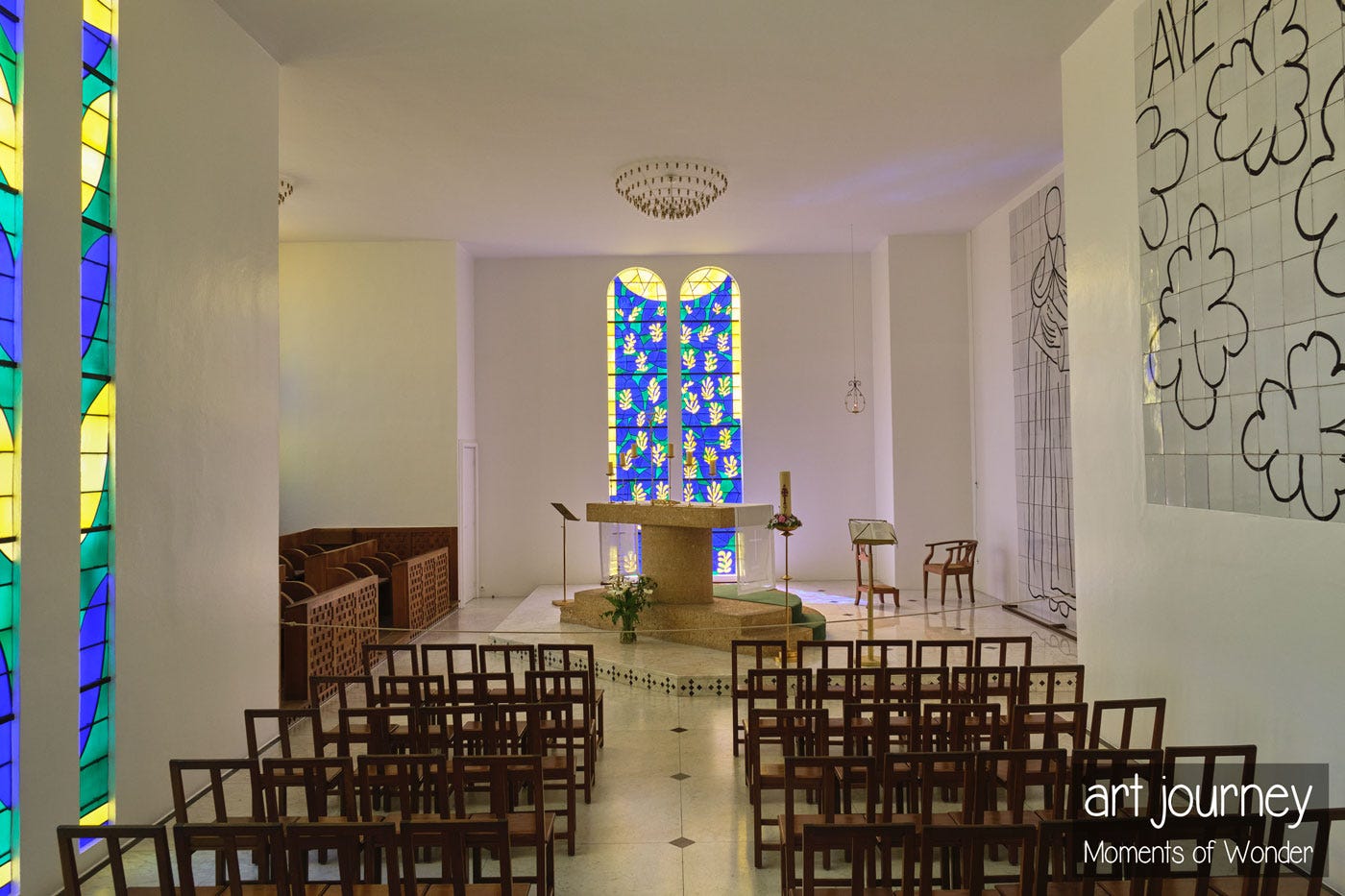

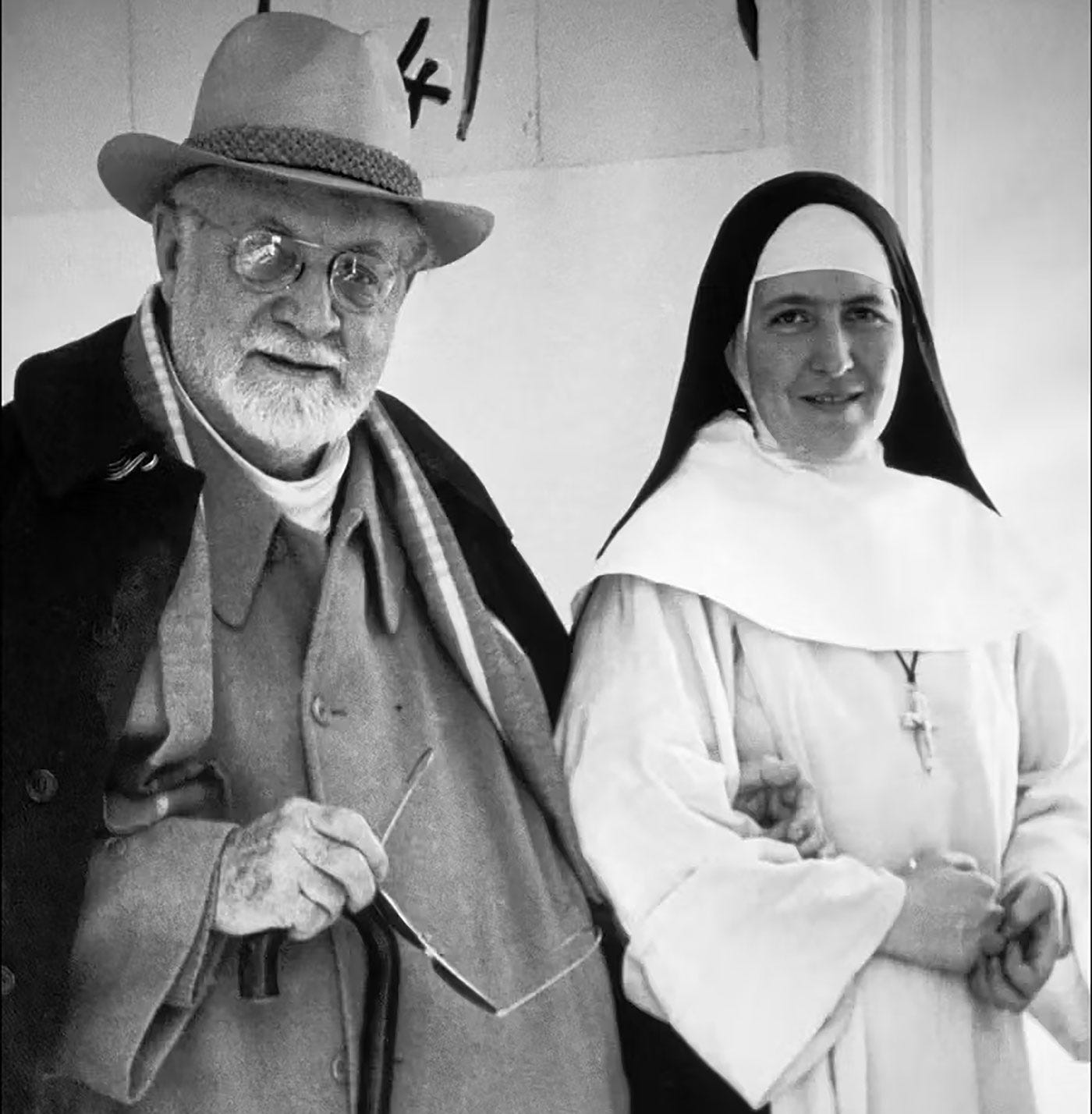
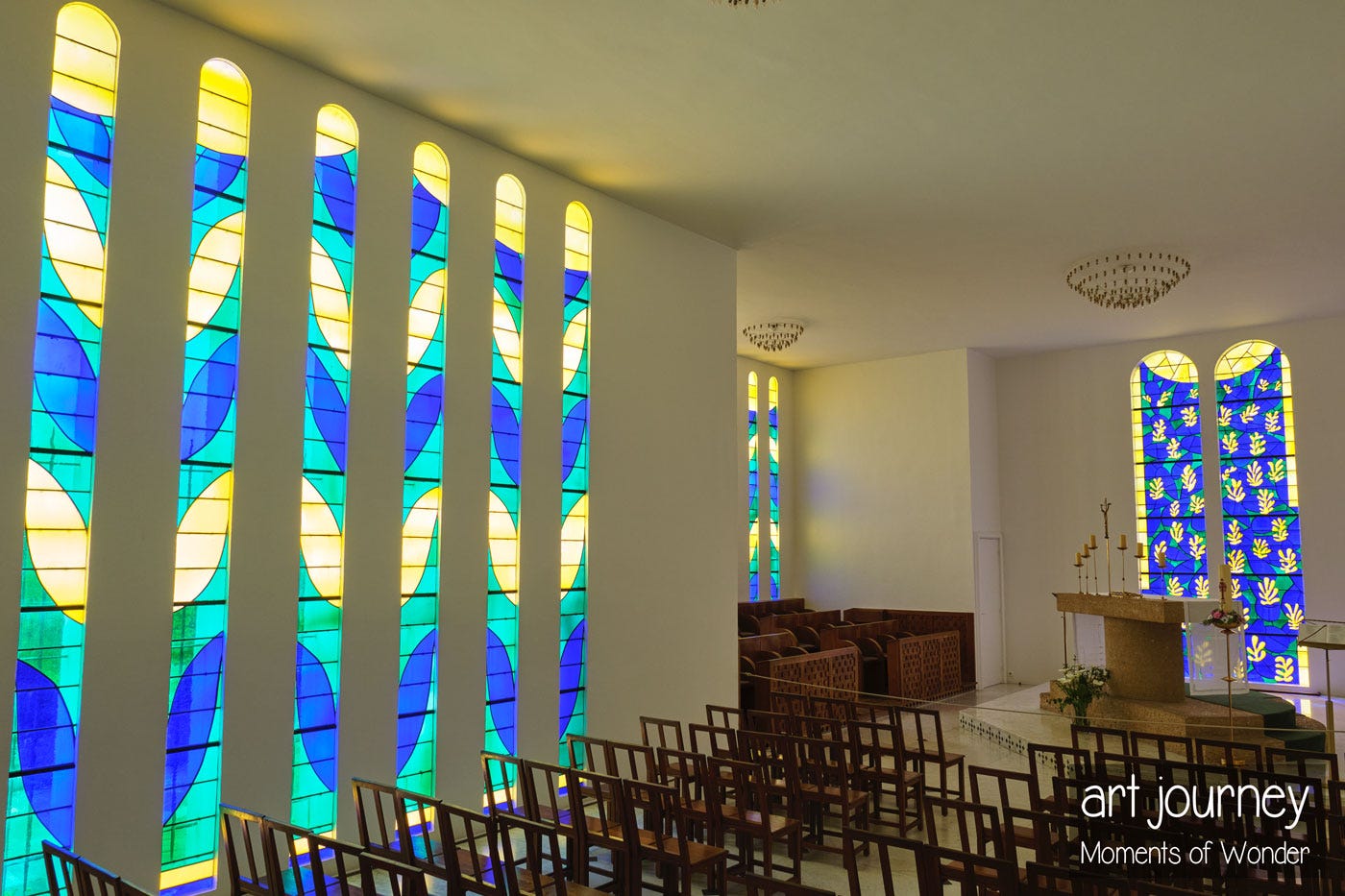
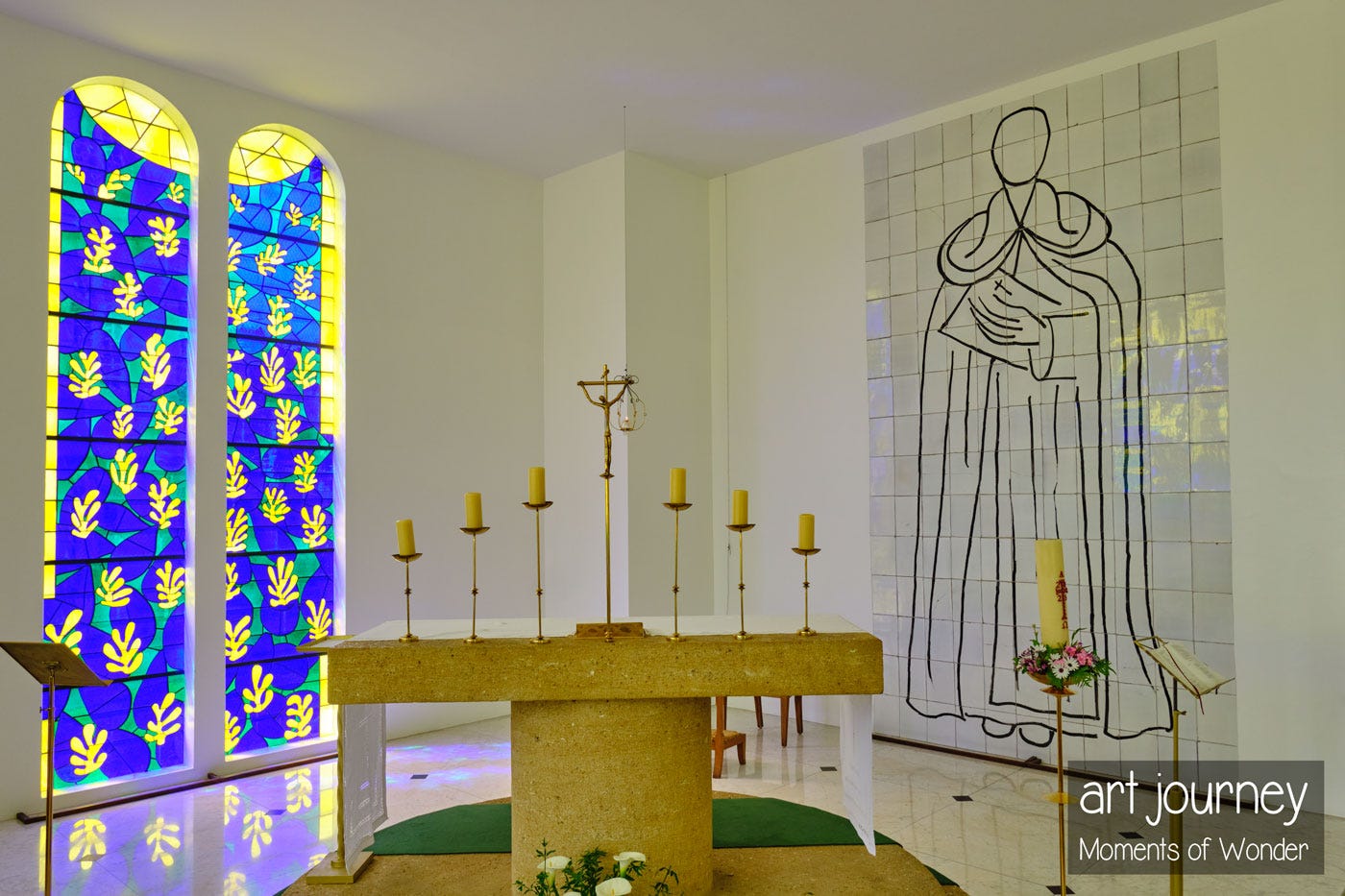
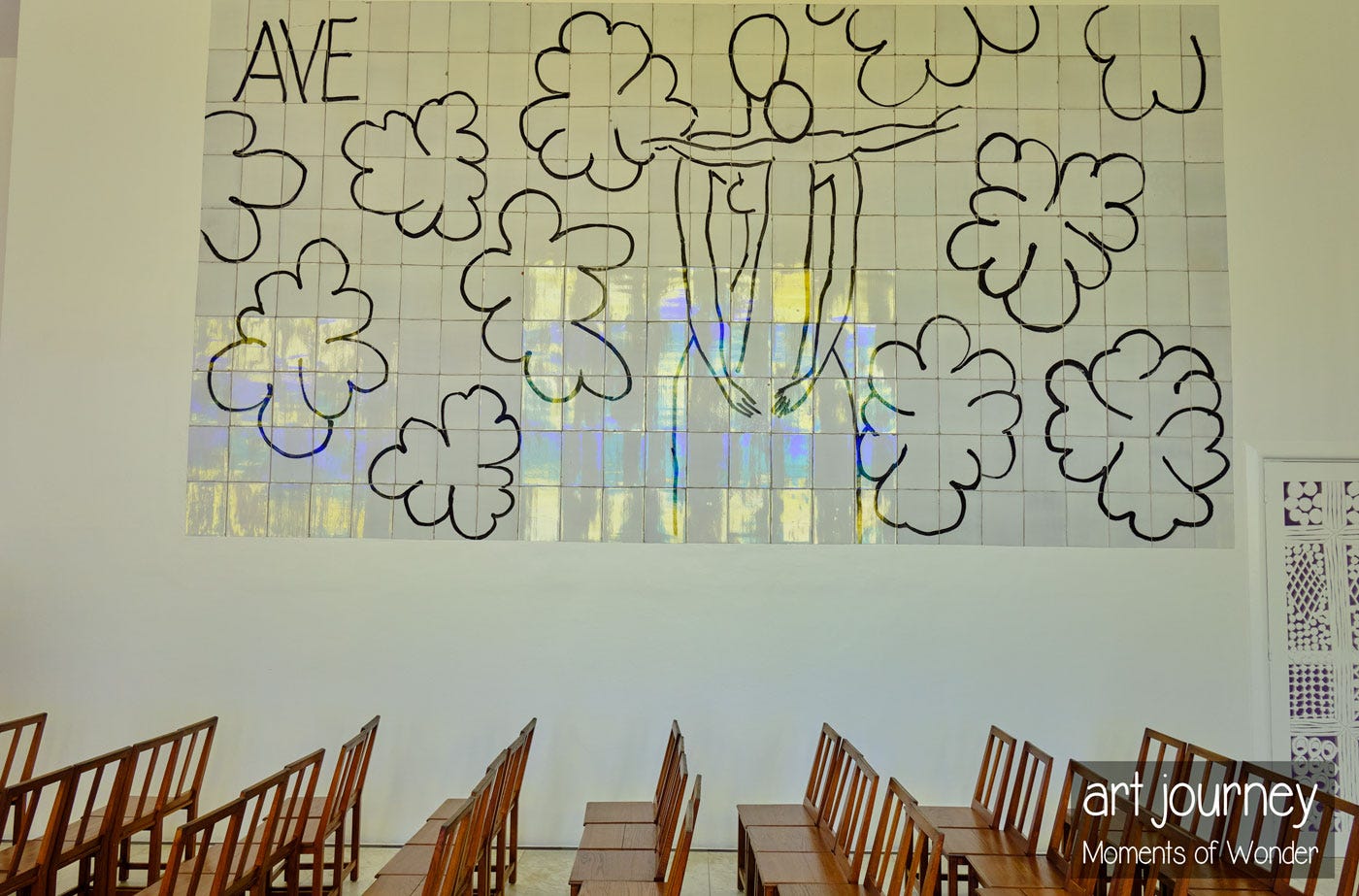

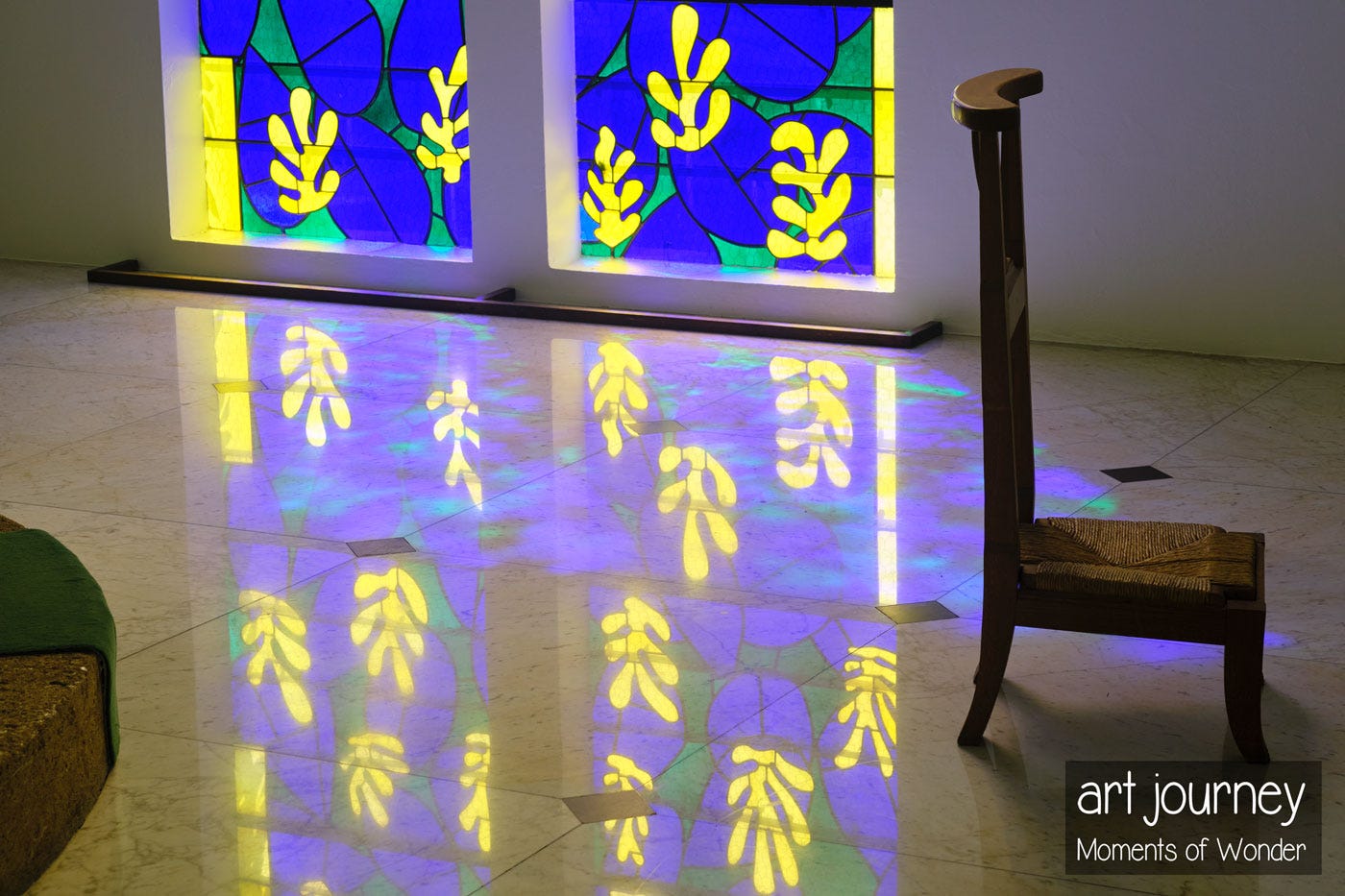
an emotional journey into one of the most relevant moments in art’s history. thank you very much Guillaume to allow us to live it through your magic words.